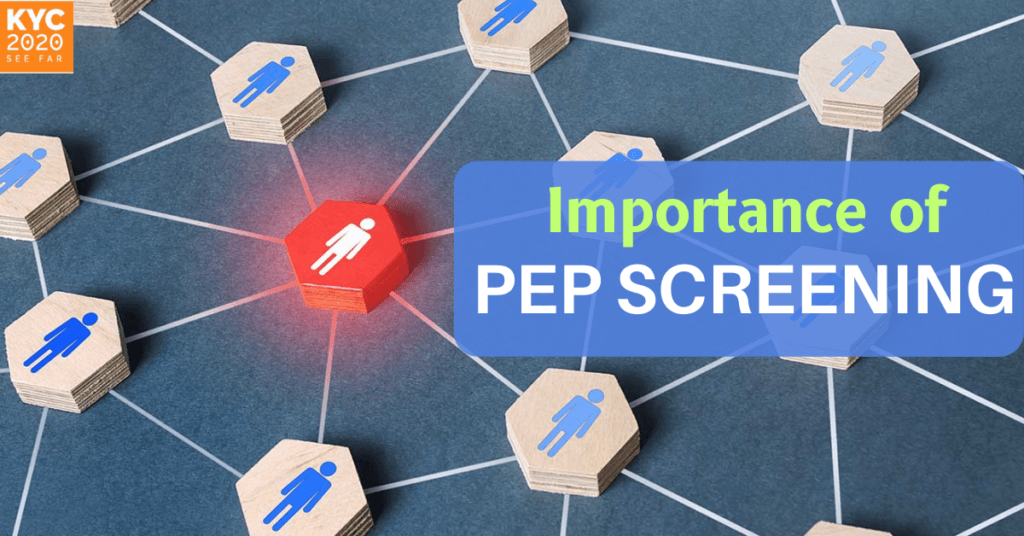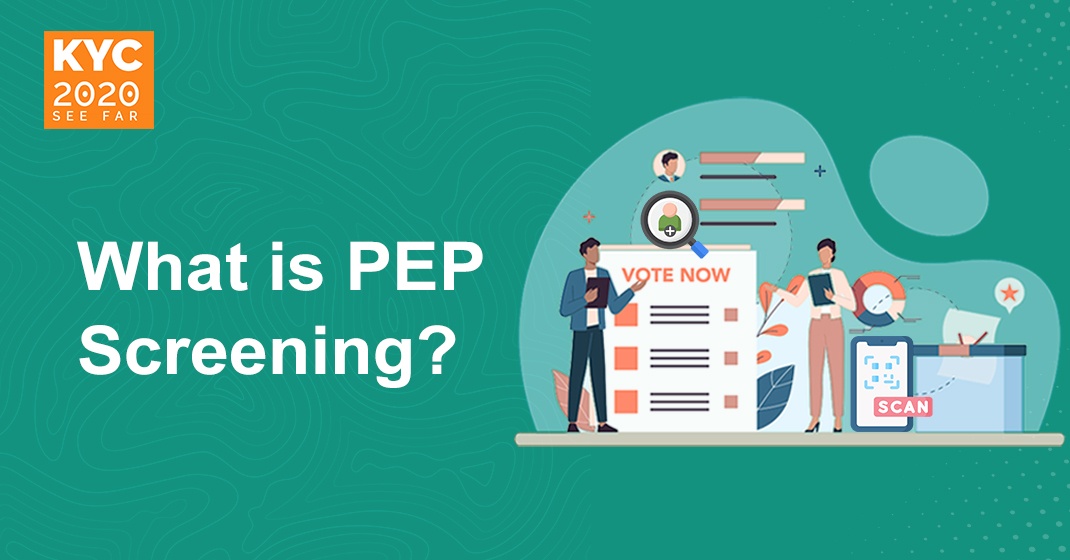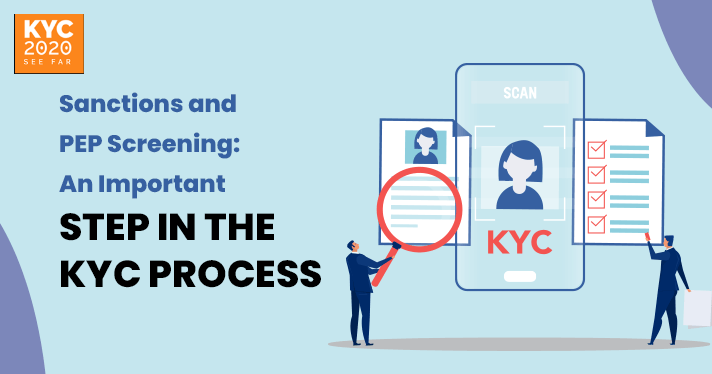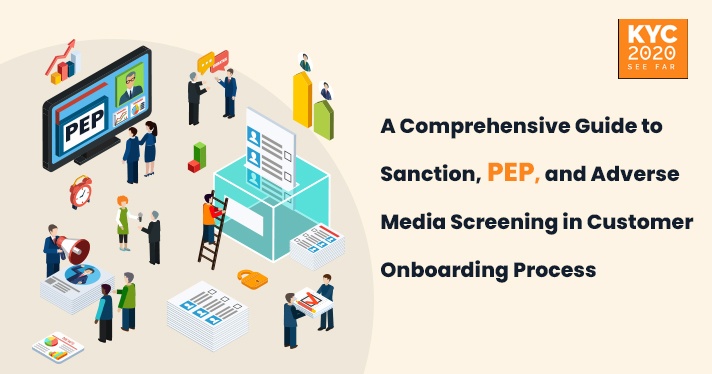Politically Exposed People (PEPs) are classified as high-risk customers with greater opportunities than normal citizens to gain assets through illegal methods such as accepting money laundering and bribes. PEPs need to be identified and screened by banks due to their potential risks. Identifying PEPs and determining the risks is commonly called PEP list screening.
The Anti-Money Laundering (AML) and Know Your Customer (KYC) laws require screening for PEP. This involves confirming a customer’s identification to determine whether they’re a Politically Exposed Person (PEP).
While banks and financial institutions can legally work with those on the PEP lists, they must take additional due diligence steps during onboarding customers to avoid AML penalties.
PEP screening for sanction is the highest risk for customers. A PEP Screening process is the process of identification of Politically Exposed Persons and assessing their risk profile for the financial institution. It is a must-screen to ensure the most efficient implementation of Anti-Money laundering (AML) compliance procedures, especially in fintech, banks, and other financial institutions.
What is the reason why PEPs should be Verified?
Crimes of corruption and bribery are major issues worldwide, and the consequences of these crimes can be quite negative. About $ 1 trillion of bribes are paid each year. At the same time, the total number of corrupt individuals is close to 2.6 trillion. These figures are serious and financial institutions must be able to prevent these kinds of crimes.
PEP screening is a process to stop crimes like corruption and bribery
PEP Screening allows PEPs to be identified. The primary reason for screening PEPs is that they are classified as people at risk due to their increased opportunities to earn illicit income, which includes money laundering, financing terrorism, corruption, bribery, and corruption.
So, companies must identify PEPs and regulate their transactions in line with laws. Companies that fail to spot PEPs and monitor their transactions face penalties for not complying with local or global rules.
PEP Screening Process
There aren’t generally accepted guidelines for defining people who fall into the PEPs group. In conducting a PEP screening, it is essential to determine politically exposed people and their family members and close friends (RCA). Furthermore, it cannot be claimed that each PEP is at risk since PEPs are distinct by their own risk.
The risk posed by the foreign PEP, domestic PEP as well as foreign PEP, and international organizations PEPs, as well as foreign PEP, is greater than the risk posed by the domestic PEP. Financial institutions must establish and improve PEP screening processes, regardless of how difficult they determine PEPs.
The PEP Screening and Sanction should be carried out according to the understanding of risk for an FI using a risk-based approach. PEP Screening should be conducted during the customer’s first engagement phase, while periodic reviews of customers when triggers require the need for a due diligence review.
In most cases, PEP Screening isn’t the only method of determining PEPs. The responsibility for defining PEP is with the business lines in direct contact with customers and must be included in CDD procedures.
Quality standards for data are needed to screen PEP
Financial institutions must be able to access accurate and complete electronic customer records to ensure that the databases used for PEP Screening provide enough unique identification information.
The PEP Screening process would be ineffective and produce consistent and consistent results with the RCA with this data. The minimum information that financial institutions must have for a reliable PEP Screening are:
- Full name
- Birth date or year
- Country of exposure to political pressure
- Gender
- Roles that are politically exposed appointments, dates of appointment, and even years
- The date PEP quit its post.
Screening existing customers against PEP Lists Frequently
The steps and precautions that are used for customer purchases to determine if a buyer is PEP is the very first step. PEP Screening on its own does not suffice. Following the initial screening, the scans must be conducted at specific times.
However, there is no specific timeframe for this, and the durations differ based on the company. PEP Screening is conducted regularly because the risk for the client may change. For example, it could not be PEP the moment a customer can open accounts for the first time; however, ongoing procedures might exist.
These scenarios can be replicated; however, as a result, PEP Screening needs to be performed regularly to alter the risk level and put these individuals in the suitable risk classifications.
PEP Risk Management Framework
Many kinds of controls establish and manage PEP relationships. Financial institutions must also implement these controls. Here are a few control measures:
Customer Identification for Existing Customers:
Financial institutions should adopt risk-based due diligence and controls when they learn of the possibility of their existing customers who are now PEP.
Risk Assessment of Customers:
Once a new or existing customer is classified as a PEP, financial institutions should assess risk to determine the degree of risk of financial crime associated with that customer and the appropriate level for due diligence, monitoring and. Financial institutions should consider the risk factors like the type of business, geography, and product and conduct risk assessments in line with them.
Instruction: Financial institutions are the primary line of defense for stopping and detecting financial sector criminals, including money laundering. Additionally, financial institutions play a significant role in identifying potential PEPs and customers. So, the risks, policies, procedures, and processes associated with PEPs should be made clear to relevant employees and their managers as an integral part of the AML training program.
KYC2020 Screening PEP
AI support
KYC2020 is an AI-powered AML compliance software. It can collect
and set up PEP data globally because of this AI support. Businesses can thus access PEP data from all over the world and request information from their customers using their surname, name identity, passport, or numbers.
Additionally, with the KYC2020, you will be able to get outcomes of customer screening within a matter of seconds. Therefore, you can implement an approach based on risk by screening for high-risk customers.
Conformity to Regulations
Every institution must adhere to AML regulations to adhere to. Institutions that fail to comply with these rules and don’t conform to the AML standards are subject to numerous criminal sanctions. Secure your company from penalties and speed up clients’ PEP controls with our robust API.
Eliminate False Positives
False positives can prevent businesses from focusing on the correct alarms, which can increase the workload. Thus, organizations must develop the best situation and set of rules. KYC2020 aims to minimize false positives. DecisionIQ Automatically clears false positives and delivers real-time actionable screening decisions along with aggregating and structuring its own global watchlist data
Easy API Integration
KYC2020’S DecisionIQ has an API-first approach alongside all the features that provide an enterprise-class service. There is built-in rapid review and case
Management system to expedite manual workflows,multiple ways to interfacevia Web, Batch, or API and built-in Persistent Monitoring to
keep up with watchlist data changes. Businesses can use these features to conduct risk assessments of their customers in just a few minutes.








